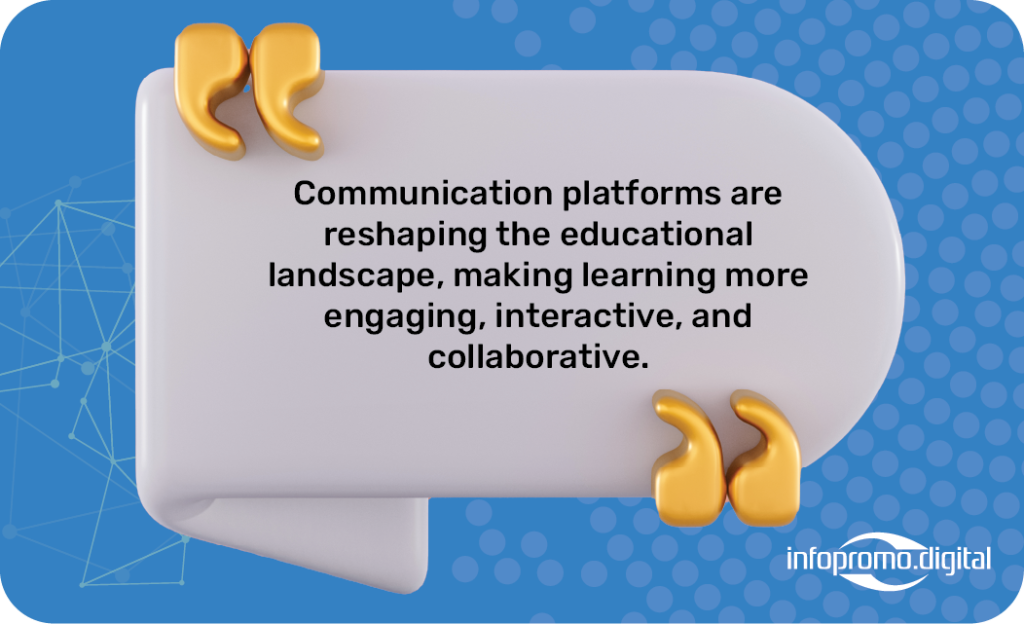In the digital age, education institutions are increasingly leveraging technology to enhance learning experiences. One of the most transformative tools in this realm is communication platforms. These platforms are revolutionizing the way educators and students interact, creating engaging, interactive, and collaborative classroom environments. This blog explores how leading education institutions are using communication platforms to foster a new era of education.

Enhancing Engagement Communication platforms such as Zoom, Microsoft Teams, and Google Classroom enable real-time interaction between teachers and students. These platforms provide various features like video conferencing, live chat, and interactive whiteboards, which make learning more dynamic and engaging. Students can ask questions, participate in discussions, and collaborate on projects in real-time, fostering a more active learning environment.
Interactive Learning Interactive learning is at the heart of modern education, and communication platforms play a crucial role in facilitating this. Tools like Kahoot!, Quizizz, and Padlet allow educators to create interactive quizzes, polls, and collaborative boards. These tools make learning fun and interactive, encouraging students to actively participate and engage with the material. This not only enhances their understanding but also helps in retaining information better.
Collaborative Projects Collaboration is a vital skill in today’s world, and communication platforms provide an excellent medium for students to work together on projects. Platforms like Slack and Microsoft Teams offer features such as group chats, file sharing, and project management tools, enabling students to collaborate effectively, even from remote locations. This fosters a sense of teamwork and helps students develop essential communication and collaboration skills.
Remote Learning Solutions The COVID-19 pandemic has accelerated the adoption of remote learning solutions, and communication platforms have been at the forefront of this shift. Institutions worldwide have turned to platforms like Google Meet, Zoom, and Microsoft Teams to continue delivering education remotely. These platforms ensure that learning remains uninterrupted, providing a seamless transition from physical classrooms to virtual ones. The ability to record sessions also allows students to revisit lectures, enhancing their learning experience.

Future of Education As technology continues to evolve, the future of education looks promising with the integration of advanced communication platforms. Institutions are exploring the use of artificial intelligence (AI) and machine learning (ML) to create personalized learning experiences. AI-powered chatbots, for instance, can provide instant assistance to students, answering queries and guiding them through their learning journey. The integration of virtual reality (VR) and augmented reality (AR) into communication platforms is also on the horizon, promising to make learning even more immersive and interactive.
Conclusion Communication platforms are reshaping the educational landscape, making learning more engaging, interactive, and collaborative. By leveraging these technologies, leading education institutions are not only enhancing the learning experience but also preparing students for a future where digital skills are paramount. Embrace the potential of communication platforms and witness the transformation of classrooms into dynamic learning environments.




